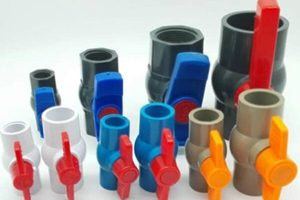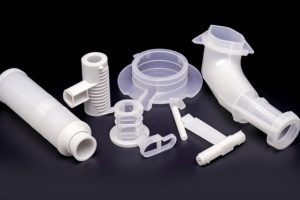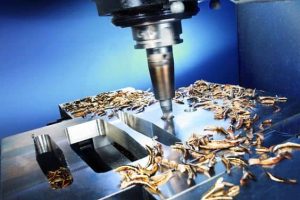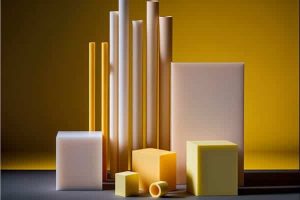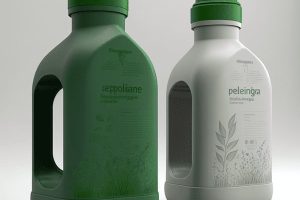When it comes to multiple manufacturing technologies, there are two main types of molding: insert molding and over-molding.

Overmolding vs Insert Molding
The general concepts of overmolding and insert molding are similar, but there are significant differences between the two processes.
Insert moulding is often used to add metal features to plastic parts.
In insert molding, the metal insert is placed directly into the injection the mold and then injected, giving the desired product in one shot.
Overmolding process requires at least two injections to obtain the desired product.
First, a plastic part is produced using plastic injection molding process, and then after it cools naturally, it is placed in another mold cavity and injection molded again, allowing the secondary plastic parts to be wrapped together.

What is insert molding?
Inserts for plastic insert molding are usually made of brass, steel, or stainless steel and have a threaded surface to provide better adhesion to the plastic pellets. Injection-molded inserts are placed in the mold manually or by machine with the mold in a vertical position.
This position allows gravity to hold the insert in place when the insert molded is closed. As the molten plastic is slowly injected into the injection mold cores, it helps to hold the insert in a fixed position.
Insert molding is often used to add metal or plastic part to injection insert molded parts before the molding process rather than after curing, thereby reducing post-molding manufacturing /assembly operations. Insert molding is a one-time molding process.

What is overmolding?
Simply put, overmolding can be plastic over-molding, soft plastic over-molding, or soft plastic over soft plastic.
Ovemolding is a two step process.
Overmolding can be achieved by either physical snap methods or chemical methods.
The former, for example, relies on snap design, surface tapping, and then overlaying the second material to achieve overmolding.
The physical connection area has strong adhesion, while the area outside the physical connection area has little adhesion.
Overmold materials include thermoplastic elastomers like thermoplastic polyurethane (TPU), thermoplastic rubber (TPR), and thermoplastic vulcanite (TPV), as well as materials like styrene-ethylene/butylene-styrene copolymer (SEBS).

The chemical method relies on the molecular affinity between the two materials and the bonding force of chemical bonds to bond the two materials together to form a single part, two or more.
Plastic overmolding (sometimes called twice-molding or multi-molding) adds other materials, such as thermoplastic elastomer (TPEs), to the plastic substrate to improve the aesthetics, handling characteristics, and grip, impact resistance, environmental resistance, etc. of injection molded parts.
Plastic overmolding serves to eliminate steps in the manufacturing process while creating enhanced injection molded products. Depending on the materials selected for the base and the over-mold, materials may be bonded chemically or mechanically.

Why choose insert molding?
Insert molding is a versatile process that has many advantages; some of which are listed below.
Lower assembly costs
One injection molding machine can make thousands of parts per day, and this economy of scale can significantly reduce the cost of individual parts.
In a typical CNC machining, sheet metal, or additive manufactured part, any required assembly may require excessive labor spending. Insert molding can be used to eliminate assembly, thus maximizing cost savings.

Part Performance
In general, plastic parts are not as strong as metal parts. Plastics also offer other advantages such as reduced cost, design flexibility, and lightweight.
Combining metal and plastic material into one part allows the advantages of both to be exploited. Metal inserts can be used where strength and stiffness are needed, while the rest of the part can be made of plastic to reduce weight.
In addition, plastic parts do not hold up well to wear and tear, while metal inserts add an element of durability to the part to withstand any type of cyclical loading.

Why choose overmolding?
Overmolding is a versatile process with many advantages.
Increased material flexibility
Overmolding allows designers to take advantage of multiple types of plastic materials to create complex parts with different characteristics, increased visual complexity, or increased tactility.
No need for adhesives
Overmolding is normally used for high volume production where the high capital costs are offset by reduced labor expenses. Overmolding allows different materials to be fused in the injection mold, eliminating the need for glue or other permanent bonding methods. This improves the overall durability of the part and reduces assembly costs.
Embedded Seals
Overmolding offers the option of molding soft seals into the part. An example is an electronic enclosure that needs to be IP rated. Typically, the part will have a recess that allows an O-ring to be installed later, permanently molding the seal into a monolithic part that is more cost-effective and rugged.

Summary
Through this article, we know that insert molding is usually a fusion of metal inserts and plastic multiple materials into a complete product through injection molding, thus saving labor costs and meeting the desired function.
Overmolding is usually a manufacturing process in which hard plastic material parts and soft plastic materials are injections molded at least twice to obtain a final product that meets the functional requirements or handfeel requirements.
Both overmolding and insert molding are designed to better save costs and meet functional and appearance requirements.
If you have a similar product that needs both processes, you can contact ZetarMold to help you achieve it, we have rich experience in both insert molding and overmolding processes.

